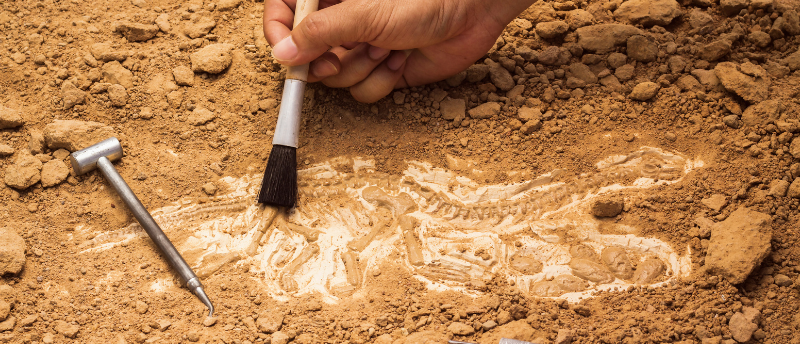Ancient DNA extracted from dirt in microscopic fossil-like bone particles

Researchers have developed a technique using polyester resin to extract ancient DNA from archaeological sediments, finding especially concentrated amounts of DNA in microscopic bone or feces particles.
Sediments surrounding materials of archaeological interest can contain ancient biomolecules, including DNA, providing an important source of information for archaeologists, especially where skeletal remains are not found. However, how DNA is preserved and the extent of its translocation in the sediments remains unknown.
A research group at the Max Planck Institute for Evolutionary Anthropology (Leipzig, Germany), led by Diyendo Massilani, collaborated with an international group of geoarchaeologists – researchers that use geological approaches to study the physical processes of archaeological sites, such as sediment formation – and have developed a technique to isolate DNA from sediment samples, which is just the first step in understanding how DNA behaves in different conditions over time.
DNA was successfully extracted from sediment blocks that were collected over the past four decades, which originate from archaeological sites across North America, Africa, Asia and Europe. The researchers prepared these blocks by soaking them in a polyester resin, which could then be sliced before microscopic imaging and genetic analysis. This process ensures the samples remain stable over time and are less likely to be contaminated with new sources of DNA.
 Modeling evolutionary history with ‘Neanderthalized’ brain organoids
Modeling evolutionary history with ‘Neanderthalized’ brain organoids
The ability to fully explore what separates us from our closest extinct relatives, Denisovans and Neanderthals, has been hampered by the lack of physical records of their brains – until now.
“The fact that these blocks are an excellent source of ancient DNA – including that originating from hominins – despite often decades of storage in plastic provides access to a vast untapped repository of genetic information,” says Mike Morley (Flinders University; Adelaide, Australia) who led some of the geoarchaeological analysis. Hominins are a subgroup of the Hominidae family, of which only two living classes remain: Pan (chimpanzees) and Homo (humans).
This means samples from various archaeological sites, which have since been refilled, can be revisited and the ancient DNA contained can be extracted and analyzed. Morley points out this is especially important due to travel restrictions in the continuing COVID-19 pandemic.
Sediment samples from the Denisova Cave in the Altai Mountains (Siberia, Russia), a site that has long been a source of paleoarchaeological interest, were analyzed as a test case. These samples were found to contain ancient DNA from Neanderthals, Denisovans and modern humans. “It clearly shows that the high success rate of ancient mammalian DNA retrieval from Denisova Cave sediments comes from the abundance of micro remains in the sediment matrix rather than from free extracellular DNA from feces, bodily fluids or decomposing cellular tissue potentially adsorbed onto mineral grains,” says Vera Aldeias (University of Algarve; Faro, Portugal), co-author of the study.
This technique allows for highly localized DNA analysis, which will give further insight into the conditions that ancient DNA is preserved. This study found that ancient DNA is not uniformly distributed as this depends on the specific features in the sediment, affecting DNA preservation.
Massilani used this technique to recover Neanderthal DNA from a few milligrams of sediment, from which he was able to identify the sex of the individual Neanderthal. “The Neanderthal DNA in these small samples of plastic-embedded sediment was far more concentrated than what we typically find in loose material,” explains Massilani. Additionally, a higher concentration of DNA was found in microscopic bone or feces particles in the samples.
“With this approach it will become possible in the future to analyze the DNA of many different ancient human individuals from just a small cube of solidified sediment. It is amusing to think that this is presumably so because they used the cave as a toilet tens of thousands of years ago”.